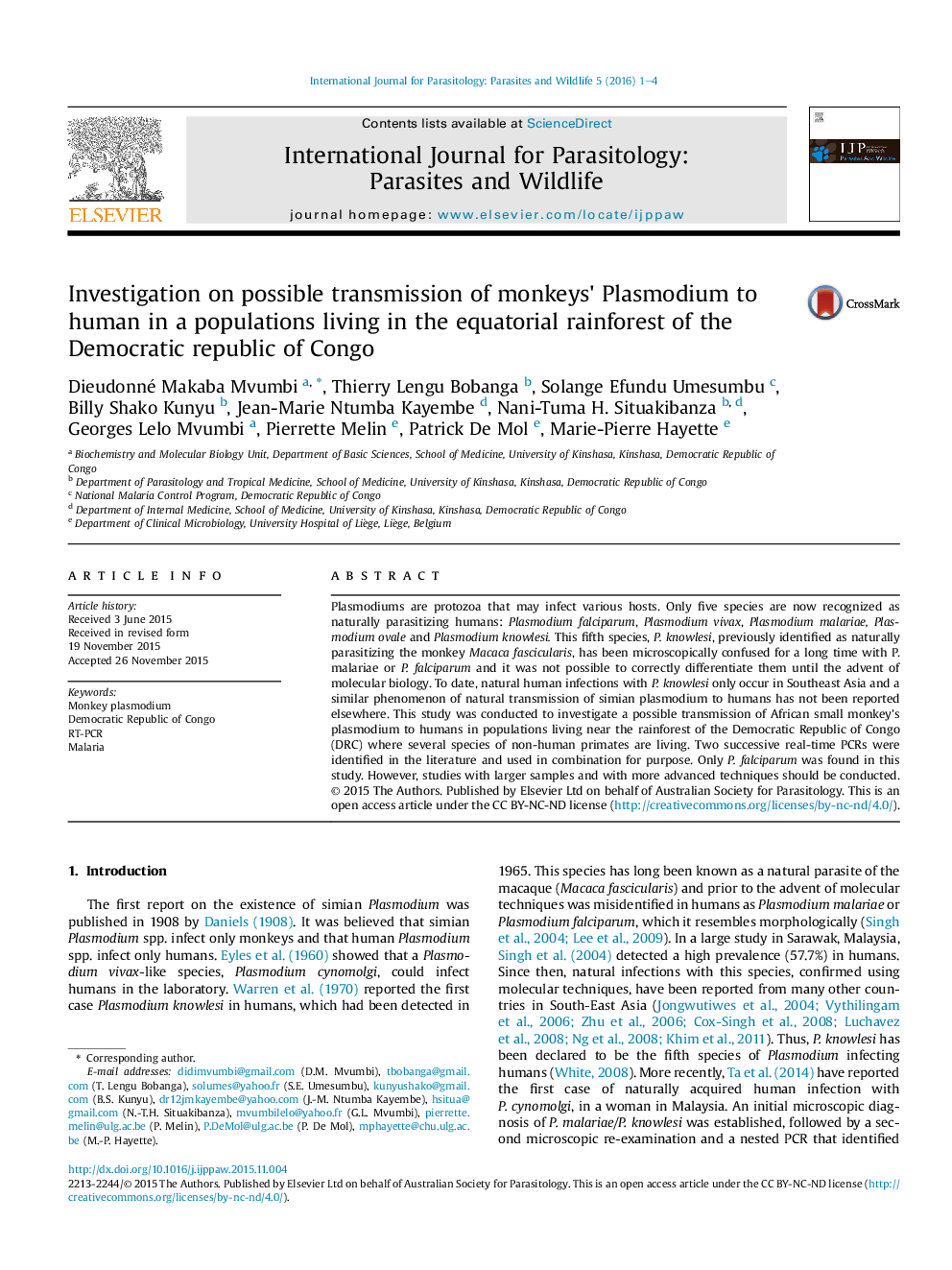| Article ID | Journal | Published Year | Pages | File Type |
|---|---|---|---|---|
| 2055341 | International Journal for Parasitology: Parasites and Wildlife | 2016 | 4 Pages |
•We developed and tested a method to detect monkey plasmodium in humans.•We have not found monkey plasmodium transmitted to humans in the study area.•Only P. falciparum has been detected in our sample.
Plasmodiums are protozoa that may infect various hosts. Only five species are now recognized as naturally parasitizing humans: Plasmodium falciparum, Plasmodium vivax, Plasmodium malariae, Plasmodium ovale and Plasmodium knowlesi. This fifth species, P. knowlesi, previously identified as naturally parasitizing the monkey Macaca fascicularis, has been microscopically confused for a long time with P. malariae or P. falciparum and it was not possible to correctly differentiate them until the advent of molecular biology. To date, natural human infections with P. knowlesi only occur in Southeast Asia and a similar phenomenon of natural transmission of simian plasmodium to humans has not been reported elsewhere. This study was conducted to investigate a possible transmission of African small monkey's plasmodium to humans in populations living near the rainforest of the Democratic Republic of Congo (DRC) where several species of non-human primates are living. Two successive real-time PCRs were identified in the literature and used in combination for purpose. Only P. falciparum was found in this study. However, studies with larger samples and with more advanced techniques should be conducted.
Graphical abstractFigure optionsDownload full-size imageDownload as PowerPoint slide
